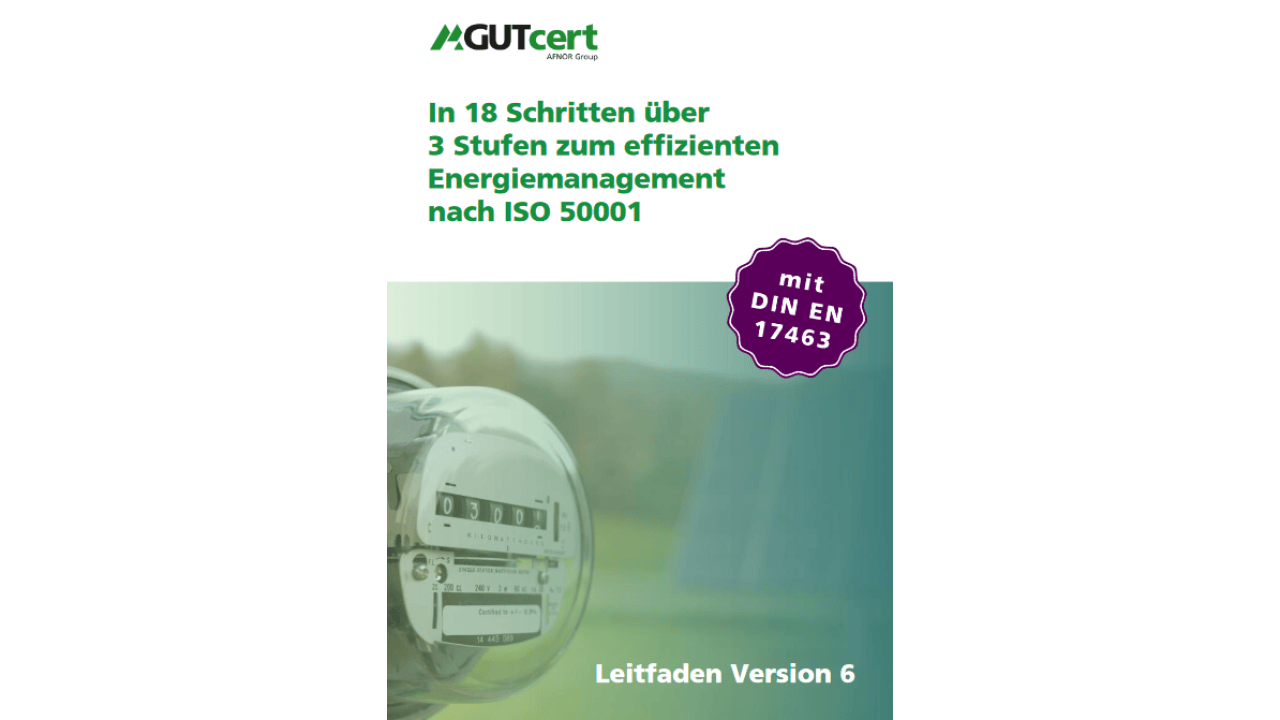Acting energy-efficiently while keeping an eye on profitability: Version 6 of our guide "In 18 steps over 3 stages to efficient energy management in accordance with ISO 50001" shows you how to do this - with new legal and normative requirements, in particular DIN EN 17463 (VALERI).
Since 2013, the legal basis in Germany has made it attractive for companies to introduce an energy management system (EnMS).
Why version six of the guide?
In November 2023, the Energy Efficiency Act (EnEfG) extended the requirements of the Energy Services Act (EDL-G) for companies. Among other things, the obligation to set up energy or environmental management systems (EMS) was introduced for companies that had an average total energy consumption of more than 7.5 GWh/a in the last three calendar years, regardless of their SME status.
In addition, from a total energy consumption of 2.5 GWh/a, there is an obligation to draw up and publish implementation plans (action plans) for economically feasible final energy saving measures. The requirements of the EDL-G were specified and supplemented by the EnEfG. With the above-mentioned threshold values, more and more companies (many from the service sector) are switching from energy audits in accordance with EN 16247 to ISO 50001 systems or to validation within the framework of EMAS.
Support for DIN EN 17463 (VALERI)
For companies in the manufacturing industry or particularly energy-intensive companies, a certified EnMS offers the opportunity to benefit from state subsidies and grants. In return, legislators are increasingly demanding a valid assessment of the energy efficiency measures (or action plans or implementation plans) identified in the EnMS in advance. This is where DIN EN 17463 has found its way into legislation and is gradually becoming the established methodology for assessing cost-effectiveness. The fact that this standard (also known as VALERI) has become a matter of course in energy management is also shown by the Energy Efficiency Act in connection with the revised EDL-G: here, DIN EN 17463 is the recognized method for assessing the effectiveness of energy end-use efficiency measures in implementation plans. You can also find out more about VALERI on our information page din17463.de.
The GUTcert EnMS guide was first published in 2006 and has been continuously developed since then. Version six provides you with a brand-new "recipe" with various new "ingredients" in the appendix to create your own energy management system. We hope you gain maximum insight from reading the guide and wish you every success in implementing it in your organization!
Link to the guide: GUTcert Guide EnMS with VALERI
